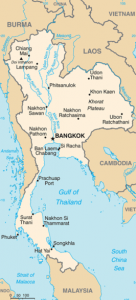While Malaysia is seeing a large increase in dengue fever cases in 2014 compared to last year, other Southeast Asian countries are seeing a significant decrease like the Philippines. But the country that has seen the most dramatic drop in dengue fever cases is Thailand, according to numbers released by the Thai News Agency today.

So far in 2014, Thailand has seen a total of 11,881 dengue fever cases to date, a far cry from 2013 when the Kingdom reported in excess of 140,000 cases. According to the Thai Secretary of Public Health, the number of patients reported so far this year is 80 per cent lower compared to the same period in 2013.
There has been 13 dengue fatalities since January 1.
Dengue fever is an infectious disease carried by mosquitoes and caused by any of four related dengue viruses. This disease used to be called “break-bone fever” because it sometimes causes severe joint and muscle pain that feels like bones are breaking.
The World Health Organization (WHO) estimates there may be 50–100 million dengue infections worldwide every year. However, new research from the University of Oxford and the Wellcome Trust, using cartographic approaches, estimate there to be 390 million dengue infections per year worldwide.
There are three types of dengue fever in order of less severe to most: the typical uncomplicated dengue fever, dengue hemorrhagic fever (DHS) and dengue shock syndrome (DSS).
There is not a vaccine for dengue fever. There is no treatment for dengue, just treat the symptoms.
For more infectious disease news and information, visit and “like” the Infectious Disease News Facebook page


One thought on “Thailand dengue fever cases down 80% this year”